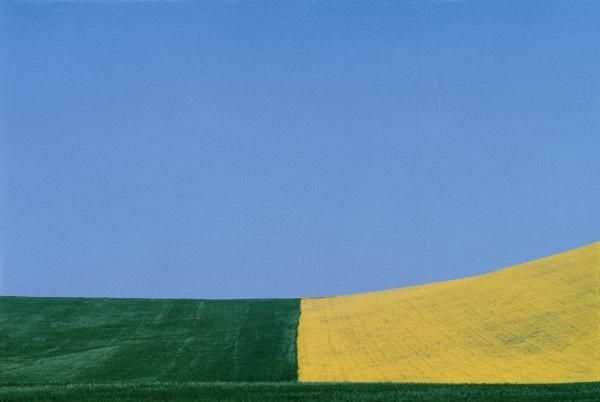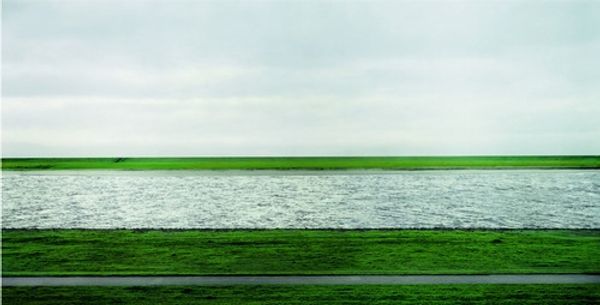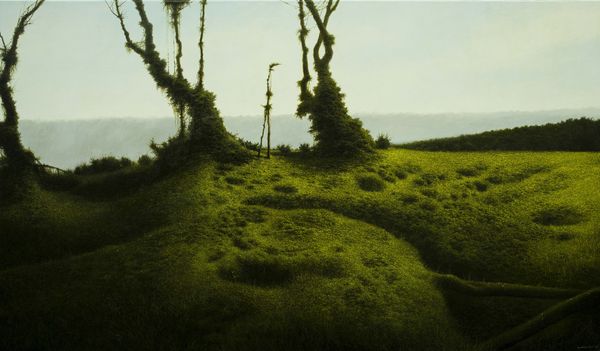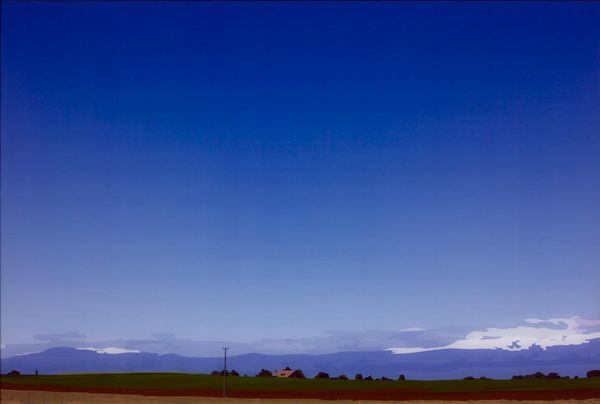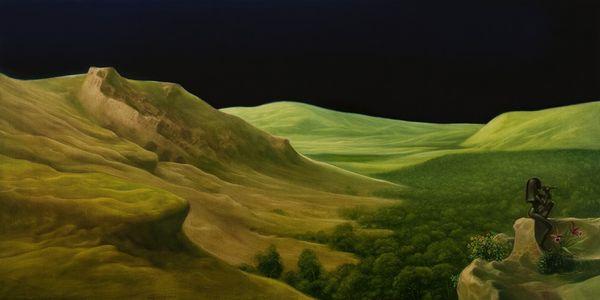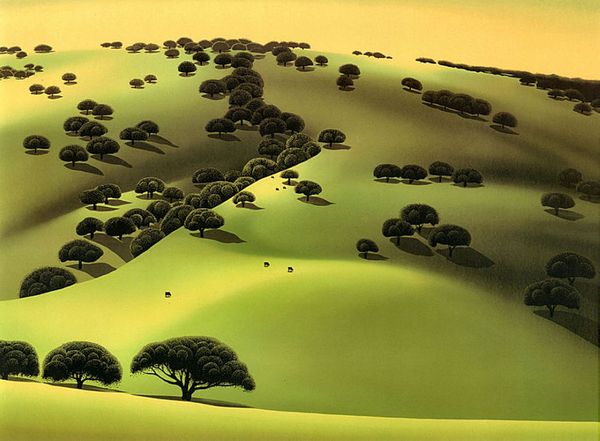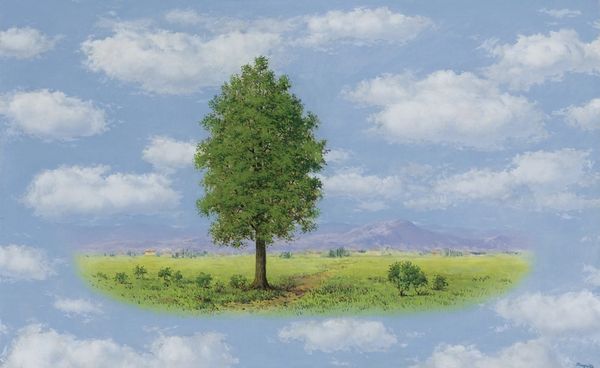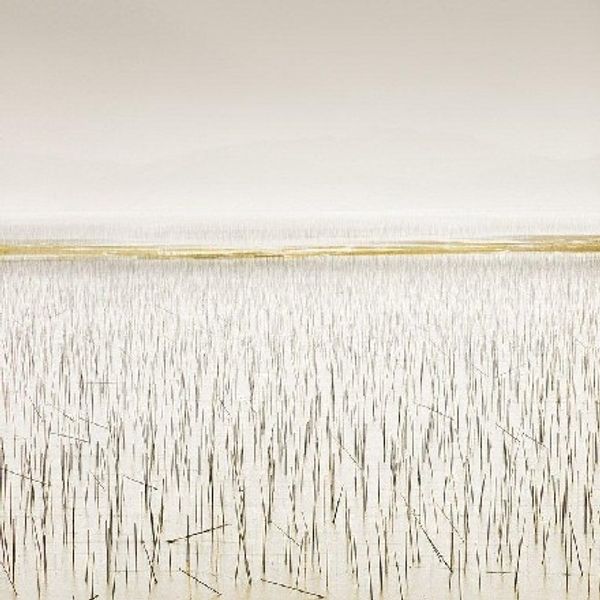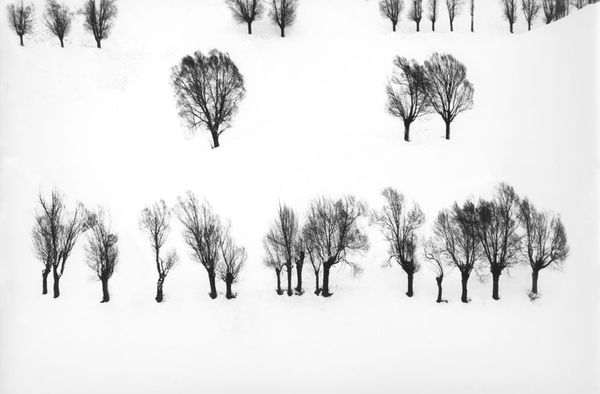
Copyright: Franco Fontana,Fair Use
Editor: This is "Basilicata," a 1978 photograph by Franco Fontana. What strikes me most is how the bands of vibrant green create an almost abstract composition. It reminds me of a colour field painting, actually. What's your take on it? Curator: It's fascinating how Fontana reframes our understanding of the Italian landscape, moving it away from traditional picturesque representations. Consider that in the 1970s, photography was still fighting for institutional recognition as a legitimate art form. Fontana, along with others, pushed the boundaries by embracing colour and abstraction. Editor: So, he’s challenging the art world, not just capturing pretty scenery? Curator: Precisely. Think about how landscapes were often used to represent national identity or romantic ideals. Fontana disrupts this by focusing on form and colour. The high horizon line and compression of space flatten the image, questioning our expectations of depth and perspective. This challenges the established photographic canon. Editor: It’s like he's taking a familiar subject and using it to make a larger statement about art itself. Were there any other photographers doing something similar at that time? Curator: Certainly. Artists were experimenting with colour and abstraction in various ways. Think of William Eggleston’s snapshot aesthetics, though Fontana is much more controlled and deliberate in his compositions. Editor: This makes me see "Basilicata" in a completely different light! Curator: Indeed, by examining the cultural context and artistic conventions, we can better appreciate the radical nature of Fontana's seemingly simple landscape. Editor: I hadn't considered the politics of landscape photography before, very insightful!
Comments
No comments
Be the first to comment and join the conversation on the ultimate creative platform.
